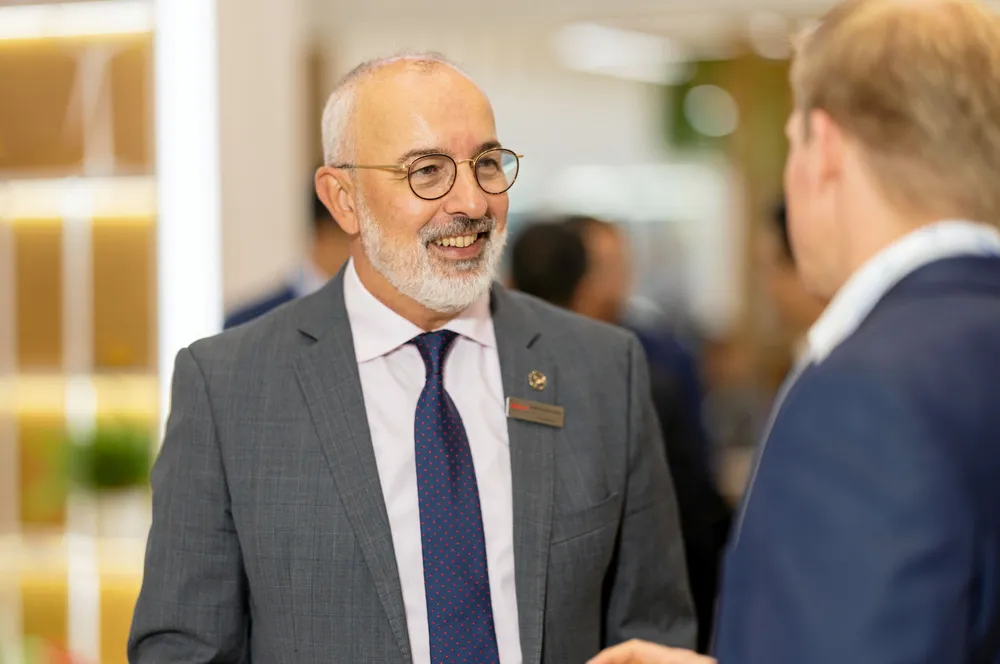European wind turbine makers face 'unpleasant surprise' from China, claims Sany chief
Sany's Europe director claimed Western wind giants 'have left door open' to Chinese by retreat from various markets

European turbine makers relying on China's supply chain could soon be in for an unpleasant surprise, Sany’s Europe chief has warned, while hitting back at comments from WindEurope’s CEO and also the company the Chinese OEM's executive described as the “most expensive turbine supplier on the face of the universe.”
Europe’s wind sector, led by industry body WindEurope, has been sharply critical of Chinese OEMs in recent years, amid concerns they could outcompete local players on the continent with turbines allegedly subsidised unfairly by the Chinese state.
Soares claimed the new models, available for sale now with delivery targeted by 2026, are the largest onshore machines available in the EU.
There has been a recent dearth of attention given to developing onshore wind turbines in Europe, argued Soares. He acknowledged that there have been new turbines but described growth as "incremental.”
WindEurope chief ‘ill-informed’
Asked about this claim and the price point of the new Sany machines, Soares said that he did “not want to be mean” but if someone says that Chinese turbines are 50% cheaper than those from Europe they are “not well informed”.
“First of all, this is not true,” he said. “Second of all, I think this person should look at how Chinese turbines are designed, and how European turbines are designed.”
“Chinese turbines are designed to be the lightest possible turbine available. Because the competition in China is fierce. We do not over-engineer a turbine to fit all markets in all countries in all conditions.”
A Sany SI-172625 turbine will have a nacelle that “weighs 20% less than the mainstream turbines in Europe,” he claimed. “So when you're talking about price, please look at everything else.”
“Absolute numbers don't tell you the real story. Go and check it properly and you'll see it's nothing like you said.”
Sharp words for Enercon CEO
Soares, who has previously worked at Siemens Gamesa, Vestas and Senvion, said it is more challenging for European OEMs to build new turbine platforms than is the case for their rivals from China, who are “protected” by huge demand in their domestic market.
“That's coming from the most expensive turbine supplier on the face of the universe.”
“What are you doing to actually be able to compete? What are your new models? Where are you investing?”
Most European turbine makers are “actually shrinking,” he said. What new offshore turbine factories have they built in the last decade, he asked. “There are none.”
Denmark's Vestas is currently planning to build a new offshore wind turbine factory in Poland, scheduled to open in 2026.
Western wind giants ‘have left door open’ to Chinese
Asked about Sany’s ambitions for Europe, Soares said the OEM has “focus countries” including Spain, Germany and Turkey.
Sany is also interested in countries he claimed are “not of interest to the mainstream OEMs,” citing Georgia, Albania and Serbia.
Sany will focus on where it has a “better opportunity” to deploy its turbines and will go places where other OEMs are not, he said.
“The door has been left open for us,” said Soares. “We go to places where those companies are not interested, but the buyers are the same.”
“If one of our Western competitors does not want to go to Egypt, we want to go to Egypt. But who is buying turbines in Egypt? European companies.”
“We have an open invitation to come here. And that's what we're doing. We're just accepting the invite.”
‘Compliance is for buyers too’
Western turbine makers may be leaving the door open to the Chinese according to Soares, but in Europe at least there is an increasingly aggressive EU Commission determined to protect its green industrial base standing on the other side.
Despite the “difficulties related to EU probes,” Soares said Sany believes that “compliance is not only on the part of the seller” but also on the part of the buyer.
Developers also have “corporate mandates and have compliance requirements,” he said. “They are not going to buy turbines if the turbine supplier does not meet EU laws.”
“Why would they do that? They will be penalised just the same as the company which is selling,” he claimed.
“Let them decide. They go to China. They visit our factories. They conduct technical due diligence.”
“They go through the approval process that includes compliance and then they decide if they want to buy the turbine or not.”
European turbine makers in for ‘unpleasant surprise’
One reason the Chinese supply chain is so cheap is the huge quantity of orders placed by local turbine makers such as Sany, he said.
In the first half of this year, 64GW of orders were placed, but out of the top ten turbines sold, three are rated over 10MW, he said.
So European turbine makers had “better move,” he said, “because if you don't move, the supply chain in China will move to where there is more volume.”
“And then you're going to be left with lower volume and higher price. Because that's the way it is. Lower volume, higher price. The volume is shifting. And the European market is being left behind.”
Could European manufacturers be in for a nasty surprise if this is the case? “I wouldn't say nasty,” said Soares, “but perhaps unpleasant.”
(Copyright)